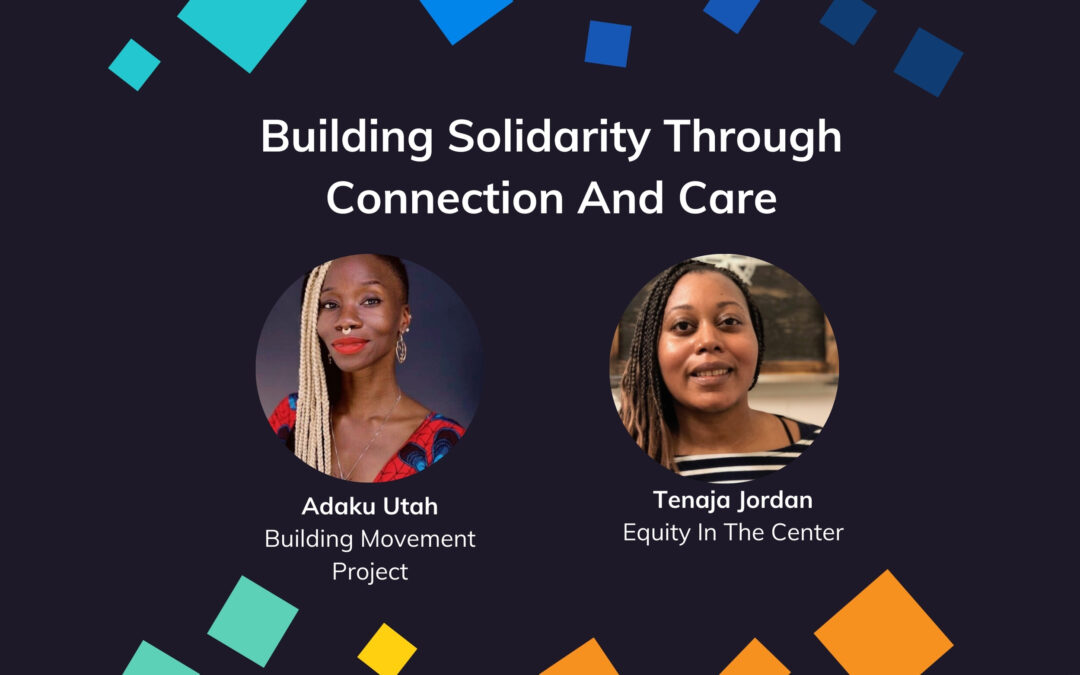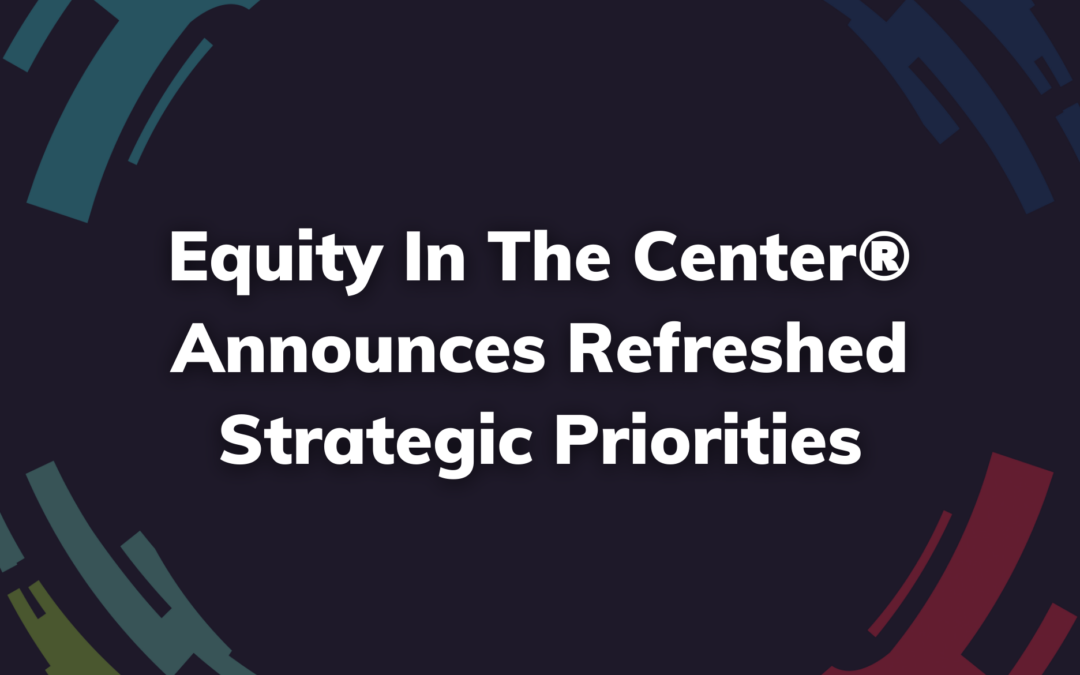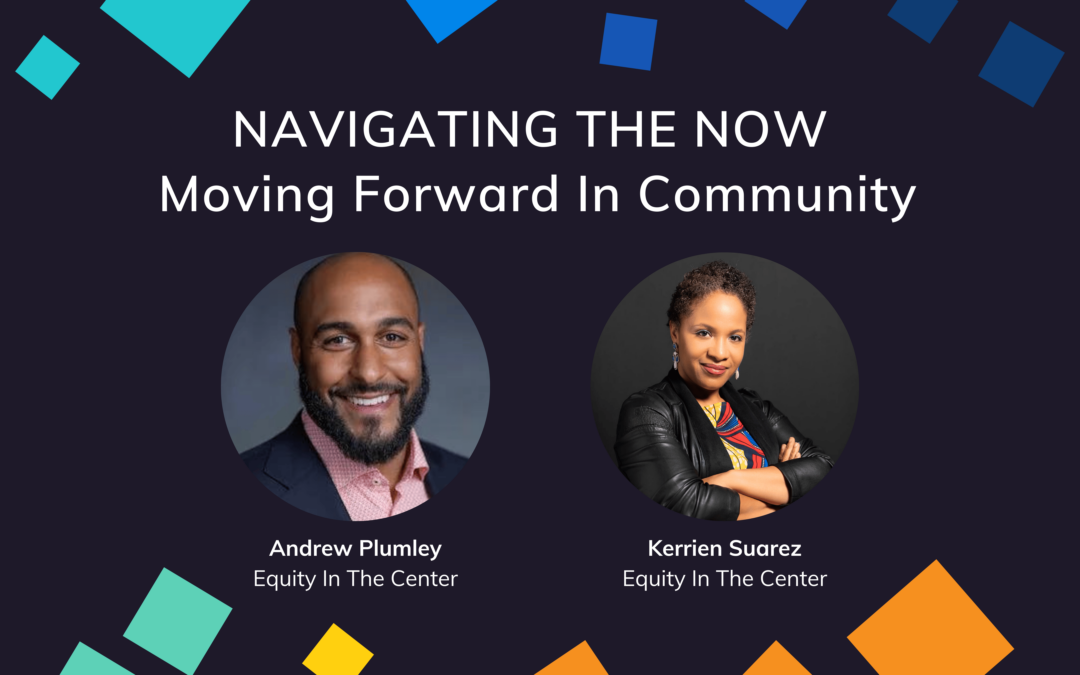This blog expands on our two previous blogs about Reimagining Compensation. You can find those blogs here and here. Both of these blogs are part of our longer series about living into values of justice and equity at CompassPoint. Read the other blogs in this series here.
How can an organization build equity in its compensation process through distributed leadership? This piece will share how CompassPoint empowered a peer-led group to provide review and oversight to a compensation process that was designed to build more equity into our system. While there is no universal recipe for building equity (every team is different), my hope is for you, the reader, to use my reflection as a window into our process and possibly uncover some gems that would be helpful in your organization’s journey to break down harmful structures and systems.
As part of an overall process to reimagine compensation to be more equitable at CompassPoint, we created a peer-led team called the Equity Panel. The Equity Panel was a unique team whose composition was meant to challenge the usual voices at the center of decision making around compensation. Our team was made up of three people of color who represented many identities in our organization: two Black women and one man of color whose ages ranged from late twenties to late fifties. The three of us held different positions, ranging from internal to programmatic, and had widely varying levels of tenure (I had been with the organization for a year and the longest-tenured member had been there for more than 20 years). We also came from different class, educational, and religious backgrounds. There was only one thing we had in common—we all have children, and even then, they ranged from infants to school age to adults.
Why were all those differences significant? We all came to the table with very different perspectives. It’s safe to say we weren’t colleagues who did much outside of the office together. Prior to teaming up on Equity Panel, the three of us even had a few interpersonal conflicts. I vividly remember one of the Equity Panel members calling out harmful, racist behaviors they had experienced from another member. My initial thought was, “How are the three of us ever going to come to an agreement on anything? Clearly we are too different.” And was I wrong…
Creating Agreements for our Equity Panel
During the kickoff meeting for the Equity Panel project, we established agreements for how we wanted to engage with the compensation review process—and with each other. We agreed to: “Say it messy” (get it out the best way you know how), keep it real (don’t compromise your own integrity for this group/process), embrace conflict (we’re going to disagree and that’s a good thing), and move as a unit (we do not share information or answer any questions without checking in first.) Our agreements kept us grounded throughout the process. They were the guiding principles for engaging with each other in our work and on a personal level. The deliberation space was one of the safest spaces I’ve experienced at CompassPoint. It was the first time I used my voice without the fear of retaliation. It was that space that helped us realize our hope and desire for a more equitable workplace (and world) brought us closer together than the differences that kept us apart.
How our Compensation Process Worked
As I mentioned earlier, organizations, their people, systems, and structures do not fit into a cookie-cutter. What may have worked for one may not work for another. The steps below were CompassPoint’s way of building equity in our organization’s compensation review process, (but they are not ‘The Way’) :
- The organization’s management (a combination of finance and operations lead and executive leadership) determined the salary structure that fits into the organization’s business model.
- Each team member, with support from their practice partner (at CompassPoint, practice partners are not supervisors in the traditional sense, but rather serve as a support to people in navigating an organization with a distributed leadership structure.), used a self-reflection tool to reflect on their contributions to the organization (the level of accountability they were holding, how they are bringing their whole selves to social justice work, and how they are maintaining and developing relationships in pursuit of CompassPoint’s mission.
- The practice member and partner met with the “Compensation Listener”, who was also the Director of Operations at the time, to discuss the practice member’s review score.
- The Compensation Listener’s role was to bring a consistent approach to each individual’s compensation review process. From each listening session, the Compensation Listener would compile and synthesize the data and share their recommendations for each practice member’s salary with the Equity Panel.
- The Equity Panel met to review the recommendations from the team member, practice partner, and Compensation Listener and ultimately either accepted or adjusted the team member’s salary.
- The Compensation Listener shared the final decisions with the team member and their practice partner.
What Worked?
BALANCING PERSPECTIVES
When developing a peer-led team that would decide on an entire organization’s staff salaries it is important to have executive leadership’s complete support. I’m not only talking about buy-in and resources (although those are necessary too!); we needed a window seat to the full landscape of the entire organization in the way that executive leadership sees it every day. This meant we had to acknowledge the reality that we couldn’t make these big decisions alone. We needed information from everyone, including executive leadership, in order to make fair and equitable decisions. One of the ways we incorporated executive leadership’s perspective is through the Compensation Listener role, filled by CompassPoint’s then Director of Operations. As I mentioned, her role in the review process was to provide salary recommendations based on data gathered through listening sessions with team members and their practice partners. We utilized tools, such as the career framework, to decide whether or not to accept or adjust the salaries she recommended.
LOVE
Although there was conflict and differences, there was also so much love in the Equity Panel spaces—love for each other, love for our colleagues and their families, and love for people that will come after us at CompassPoint. The love that fueled the Equity Panel is an example of a Martin Luther King quote: “Power without love is reckless and abusive, and love without power is sentimental and anemic. Power at its best is love implementing the demands of justice, and justice at its best is power correcting everything that stands against love.”
To this day, I trust the other members of the Equity Panel with my life! They are a part of my family. This project gave us an opportunity to connect, to see the humanity in each other and accept our imperfections and limited perspectives. The work we did outside of the project deepened our relationships. Our conversations deepened beyond the superficial topics like work, current events, and weather. We were giving and seeking feedback and supporting each other through life events. We even attended a multi-day intensive workshop on undoing racism together.
BUILDING TRUST
There was a sense of pride and pressure that came with being a part of a team like the Equity Panel. I knew the power I held in determining a major element of someone’s life—their income. This project was bigger than my colleagues and me. Our decisions had the power to change the entire organization. As Big Worm once said, “Playing with my money is like playing with my emotions.” Our colleagues were trusting us as their peers, to use our knowledge and wisdom to make what is often an executive-level decision which would impact them and their families. That’s no small task.
On an organizational level, we were building bridges between executive leadership and staff, especially with folks who rarely speak up for themselves and are likely to be left unheard or face repercussions when they do. Engaging the full practice throughout the entire compensation process, from re-imagination to implementation, gave us all a part in the creation of a more equitable compensation structure. Employees trusted the Equity Panel, in part, because our team was comprised of at least one member from each job family who had experience doing similar work. This helped the team identify the competencies needed to align with a specific job family. We also built trust by explicitly naming our commitment to ensuring each review process was equitable and consistently applied. What better team to ensure consistency than one with members with firsthand experience doing the work?
EMBRACING GROUP DECISION MAKING
The decision-making process was tight. Each salary was confirmed or adjusted by a unanimous vote. If any member raised a tension or objected to an employee’s salary recommendation or adjustment, we reopened the process and actively grappled until we landed on a decision. If the group was unable to settle on a decision or needed additional information, project leads, practice partners, and/or executive leadership were invited to share their perspectives. The Equity Panel did not communicate with the practice member directly because it had the potential to compromise CompassPoint’s value around non-negotiable salaries.
What Was Challenging?
When we were faced with a roadblock and unable to make a decision about an employee’s salary, it was very challenging to utilize the voices and perspectives of other practice members and not the person directly impacted by the decision. I wish we would have done more to interrogate this stance and confirm whether the risk of not communicating with staff members brings more equity to the process than discussing reflections directly with the practice member. If CompassPoint reactivated the Equity Panel tomorrow, I would challenge the team to consider engaging directly with reviewees when additional perspectives are needed to land on a decision. Of course, some boundary setting would support us in finding the “sweet spot” between the two values.
It was even more taxing to go through a process where I was both reviewer and reviewee. How can you remain fair when you’re also deciding your own salary? Recusing yourself from the deliberation and decision-making process is one way. I’m not sure if it was the right option for the Equity Panel. When it came to completing our compensation self-reflection and engaging in a conversation with the Compensation Listener, my colleague (another Black woman) and I didn’t value our contributions to the practice on the same level as we did others. We were strict on ourselves—too strict. As a Black woman who was an entry-level operations coordinator with a great deal of decision making power, I had an invisible weight on my shoulders. With this power, I feared folks thought the Equity Panel members had unfair access to salary increases. How would the rest of the practice react to our growth into new job families with significant salary increases? The last thing I wanted to do, and I risked sacrificing my own growth for it, was to degrade trust. I cared deeply about ensuring my colleague’s salaries were aligned with their work. I also care about my reputation, so much that I almost sacrificed my pay. In preparation for writing this piece, I did some serious reflecting on how I showed up for everyone but myself and the only other Black woman in the practice. Was it our own internalized oppression that kept us from valuing our contributions? Did we let the narrative of needing to be twice as good while accepting half as much prevent us from aligning our work and salaries? I’m continuing to learn about my relationship to money and power. With that, I’ve come to understand the survival reactions against habits of white supremacy that exist in me.
Ultimately, some additional input from CompassPoint’s formal management team at the time helped challenge our assumptions about where we were placing ourselves on the pay scale. But, that doesn’t mean it was simple. Stepping into these decisions around money is complicated and emotional. It draws on our personal histories and, for Black Women especially, we are pushing up against a culture that wants us to undervalue ourselves.
Other Considerations for Creating an Equity Panel
TIME
A project of this magnitude, especially one with a major impact on employee retention and recruitment, requires a significant amount of time for planning and implementation. Without foundation support through a general operating grant, it may have taken us several years to complete the compensation reset project. The unrestricted funding allowed us to shift our focus internally and re-create equitable systems and structures at CompassPoint. To my readers who work on the funder side of change-making, general operating grants are imperative to driving our missions for social change. Similar to self-care, community care is knowing when to pause and tend to ourselves—as a whole. Scaling back on our programmatic work gave us time and space to practice what we preach and live more fully into walking our talk.
COMMITMENT
In order to fully step into a different model and successfully deliver on the outcomes, it is important to have buy-in from everyone impacted by the Equity Panel project, which in this case, meant every CompassPoint employee. During a discussion on implementation, we introduced the idea of creating a peer-led group to decide all salaries. We created space for our colleagues to share their curiosities, concerns, and objections about the Equity Panel project and its team members. Without the full support from staff, there wouldn’t have been an Equity Panel. Their feedback kept us accountable throughout the compensation review process.
We all have biases and blindspots. In every situation—big or small—there are always opportunities for growth and learning. The Equity Panel explicitly named our commitment to noticing our biases and interrogating them as they show up in deliberation spaces. The community agreements established at the beginning of the project created a safe space to recognize our own race, power, privileges, and biases. For organizations that are currently (or considering) building more equity into their compensation structure, you must first commit to recognizing your biases and limited perspectives and create safe spaces that invite employees to stand in their truth with a willingness to learn.
It’s Not Easy But It’s Necessary
Building equity isn’t easy, but it’s necessary. As I close this piece, I feel an overwhelming sense of gratitude for the people who are stewarding CompassPoint down the path of liberation. I am grateful for the opportunity to be a part of a compensation reset process that cared so deeply about employees and their families. I can proudly say that I belong to an organization that compensates its employees based on their lived experience, emotional contributions, and the level of impact their work has on driving change—not employee “performance”. An organization that empowers its employees to make high-risk decisions, which can greatly impact its systems and people. Major shout outs to Sarah Gort, Byron Johnson, Spring Opara, Nelson Layag, Jeanne Bell, Shannon Ellis, and Lupe Poblano for their roles in building equity into CompassPoint’s compensation structure. To the past and current staff of CompassPoint, thank you for your honesty, love, and trust in the Equity Panel.
Read the other blogs in this series:
- Putting Racial Justice at the Center: How Did CompassPoint Get Here?
- A Vision for Belonging
- We Can’t Work Toward Racial Justice Without Working On Relationships
- Reimagining Compensation: It’s Time to Stop Building On Inequities of the Past (Part 1)
- Reimagining Compensation: It’s Time to Stop Building On Inequities of the Past (Part 2)
Resources:
- Staffing the Mission: Improving jobs in the nonprofit sector A Class Action report by Betsy-Leondar Wright and Anastasia Lynge
- Undoing Racism (workshop) from People’s Institute of Survival and Beyond



